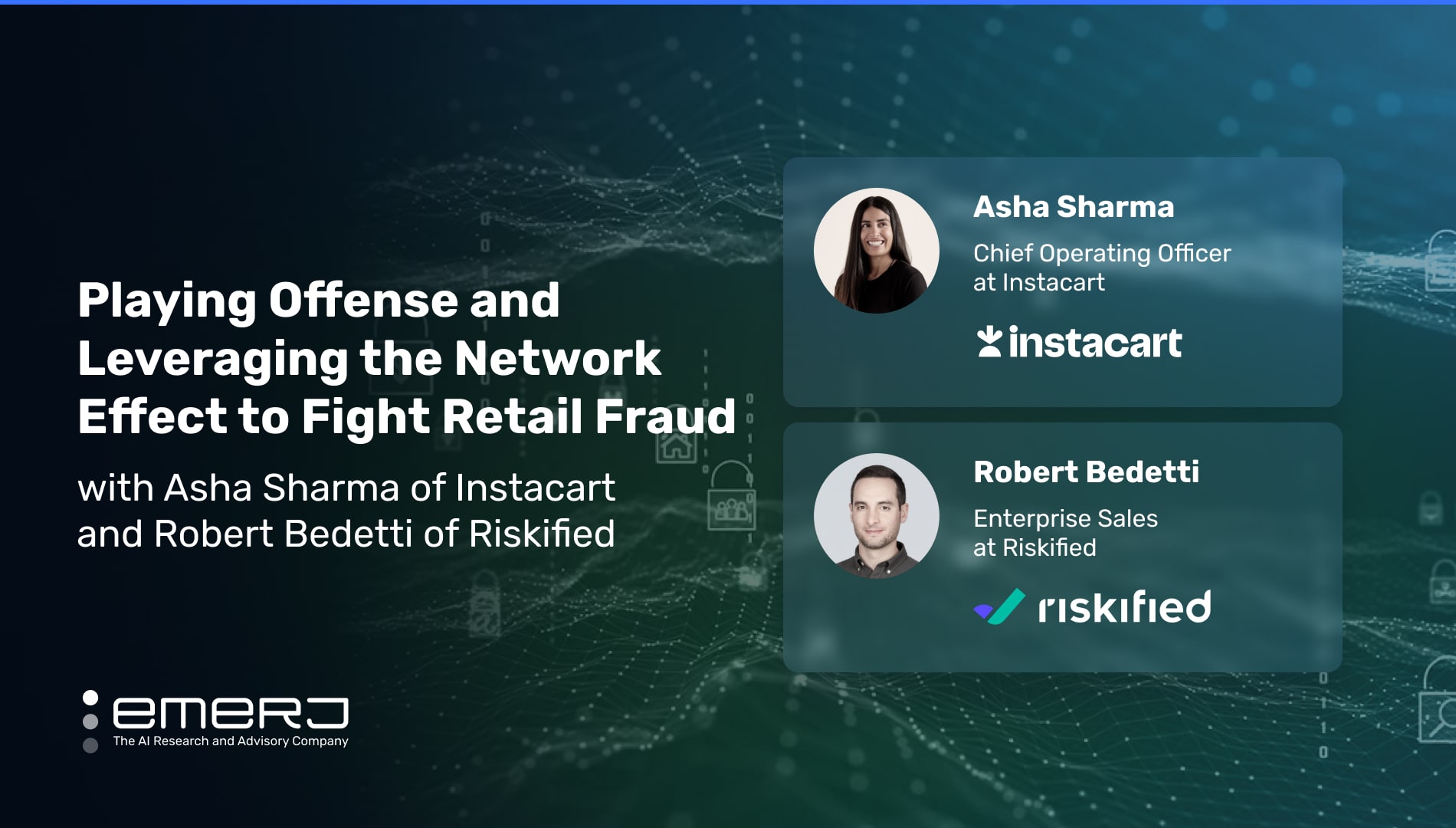The advent of the COVID-19 pandemic is leaving retail and eCommerce enterprises awash in numerous, often chaotic trends, many of which are proving critical for driving AI adoption throughout the industry. Perhaps most prominent among these market dynamics is an enormous shift to online retail.
According to the U.S. Census Bureau, eCommerce sales grew by $244.2 billion or 43% in 2020, up to $815.4 billion from $517.2 billion in 2019. Consumers have more options than ever to interact with and order from brands, resulting in as many new ways to commit fraud and policy abuse against retailers.
Technological advances also increase scrutiny for privacy data and systems and the business leaders responsible for them – more persistently than the occasional headline-grabbing corporate breach.
As retail leaders know, such incidents are rare, and the super-criminal fraudsters behind them don’t represent any significant fraction of the customers that make retail organizations profitable. Yet through predictive AI capabilities, retail leaders can use these data to anticipate where and when fraud will happen beforehand.
Emerj Technology Research recently hosted Instacart COO Asha Sharma for a conversation with Riskified Strategic Sales Director Robert Bedetti following Asha’s appearance on the ‘AI in Business’ podcast as part of a special series sponsored by Riskified.
Together, they provided more profound insight into Instacart’s value proposition as a digital-first grocery brand and how enterprises can level up their digital transformation through AI use cases in customer experience and personalization to fight fraud more efficiently.
As these technologies increasingly fall into the hands of retail and eCommerce players, large and small, the hard-won lessons about how they work and how best to use them will separate the winners from losers in the age of AI. To that end, this article examines three key topics Asha and Robert discuss during their conversation, extrapolating from Asha’s appearance on the ‘AI in Business’ podcast:
- Building beyond defense initiatives: How to build the infrastructure for enterprise capabilities that prioritize proactive approaches to diminishing the strongest data signals for fraud.
- Leveraging the network effect: Working with partners across industries to collect and classify common customer behavior data that allows for a deeper examination of their relationships to the bottom line of the business.
- Classifying gray-area scenarios: Segmenting customer behavior data to derive the most meaningful data signals about the profitability of legitimate customers.
Building Beyond Defensive Initiatives
In a time when users can find TikTok videos on ‘how to get groceries for free,’ fraud in 2023 just isn’t as black and white as it used to be in the golden days of brick-and-mortar.
“It’s no longer ‘Is this person a criminal or not?’ Right now, it’s ‘Are they profitable? Are they unprofitable? Or do we want to try to change their behavior?’ So it’s much more nuanced,” warns Bedetti.
Taking a closer look at Instacart’s built-in value proposition as an enterprise cultivating multifaceted personalization and data from its inception, Robert notes an advantage they have in materializing the signals from worse-case offenders in the data.
“I think it gets even more interesting when you have a multi-sided platform like Instacart, the types of behaviors we see start to get much more multifaceted. You’re not only looking at the customer’s account, we might also be looking at the shopper or the grocer. With other on-demand delivery platforms, we see a lot of collusion between fraudulent customers and shoppers or sellers (who often are the same fraudster),” he explains.
However, many retail and eCommerce companies are still in the midst of their digital transition. They can learn much from the policies and systems that an online-first company like Instacart has spent the last decade perfecting. Bedetti concedes it can be difficult within these companies because there are organizational silos that focus on loss prevention or customer acquisition.
The end goal, Bedetti emphasizes, is for retail leaders to understand exactly:
- Who their customers are
- What their relationship is to the company’s bottom line
- The commonalities in these customers’ behavior on their site and other eCommerce online storefronts
“There is no reason that you can’t leverage that data, both for loss prevention as well as personalization, and provide a better experience to good customers,” Robert tells Emerj.
Many legacy institutions, even of Instacart’s size and caliber, are inclined to invest in defensive positions when developing their personalization systems and other beachheads in their digital transitions – instead of offensive investments like pursuing new use cases. In many ways, Instacart serves as exhibit A in showing that doesn’t need to be the case.
From her time at Instacart, Asha shares her experience when the organization began being more proactive about its approach to customer experience and its relationship to reducing fraud. They often found their network partners’ AI initiatives weren’t as mature, and subsequently, their processes were further bogged down in silos and other inefficiencies.
What separates the enterprises that achieve maturity faster, she and Bedetti agree, is making that offensive, proactive approach a priority early into building personalization and customer journey systems.
She mentions how Publix and CPGs like Pepsi, in particular, share a “customer obsession, centricity” view in addressing fraud through personalization. Instacart also finds this necessary to support an eCommerce enterprise like theirs in the long-term:
“I think the philosophy is there; they push us in this direction. Unfortunately, it’s hard to build an online grocery delivery business; it takes 100 million plus orders to become profitable. So it’s not the core competency of many companies to have deep technology expertise. Our commitment is to take a user view and a customer view of everything. So we’re looking at customer lifetime value, and then we’re looking at problems from there. We don’t look at fraud as the top line, we look at the customer as the most important thing, and then we work our way down from there.”
– Instacart COO Asha Sharma
Leveraging the Network Effect
Yet no matter the size or shape of the organization or the industry segment in which they’re operating – certain forms of personal data are routinely used in anti-fraud efforts. These data points can include IP address, purchase size, activities while navigating the online storefront, and beyond.
With the collection and enhancement of AI tools, these data can help enterprises better detect behavior that is not human, perhaps a bot deployed by fraudsters to repeat fraudulent activity on a covert basis.
In those extreme circumstances, Bedetti says the tools “can get much more granular about behavioral metrics and device fingerprinting,” but only when the organizations deploying them collect enough data. When they’re collecting vast amounts of data, says Bedetti, it can unlock capabilities beyond preventing fraud to making good customers’ promotions more relevant or support cases more seamless.
These capabilities only become amplified with the network effect organizations like Instacart use to detect even broader patterns of customer behavior data across their retail partners, or in partnership with organizations like Riskified, who work with some of the largest online retailers globally.
To make network capabilities possible, Asha tells Emerj and Riskified that Instacart uses what she describes as ‘flat inputs’ to make their platform and metrics as compatible with that of their partners as possible. Inevitably, there’s a process of deeper learning that comes with understanding the specifics between respective partner platforms.
Even across retail spaces as disparate from the grocery space as jewelry or consumer goods, point of purchase and payment processing offers a broad common ground of customer data to extract deeper insights from AI-enhanced analysis.
Classifying Consumer Fraud
These enterprise capabilities further allow retail businesses like Instacart to verify more opaque forms of fraud indicative of more “sophisticated fraud rings,” as Robert describes them, that we see elsewhere in eCommerce. Examples of such activity include multiple actors setting up and coordinating fake merchant and customer accounts to fabricate entire purchase histories.
“What’s interesting is that ‘the worst of the worst’ are increasingly doing a better job of making themselves look like the best of the best. That’s where early anomaly detection is useful, and having AI detect patterns that happen before the big loss has happened,” says Bedetti.
In between the worst actors and the business’s most loyal and well-behaved customers is a space that can be charted and leveraged for the advantage of the enterprise, so long as they’re collecting enough data.
As those metrics begin to show gradients of abuse activity and kinds of abusers, organizations can use the same AI capabilities delivering those metrics to classify both fraud and unprofitable activity, from personalization and other data collection efforts across the enterprise.
All three guests in the Riskified-sponsored podcast series — including Chris Nelson, SVP of Asset Protection at Gap Inc., and Gerald van den Berg, VP of Analytics at Etsy — were unanimous and unambiguous that the data involved in these collection efforts should be thought of in terms of the value of each customer to the bottom line of the business, even those engaging in open and brazen policy abuse.
Asha puts a finer point on how Instacart looks at classification in conversation with Bedetti after her podcast appearance:
“For us, we draw the line, and if they’re fraudulent, they’re fired. There’s definitely a gray area where you just need to have interventions. You need to give different warnings or educate the customer. Then there are some customers that are unprofitable, doing nothing wrong. For us, that’s a customer that we will do everything we can to build a great relationship with them over time.”
– Instacart COO Asha Sharma


















